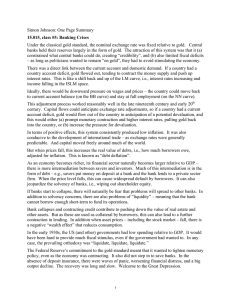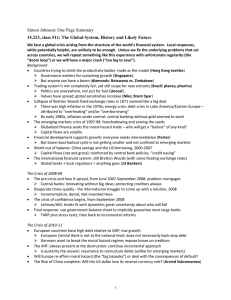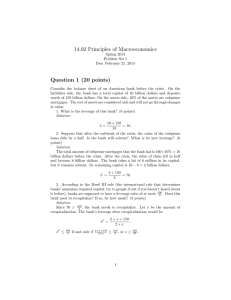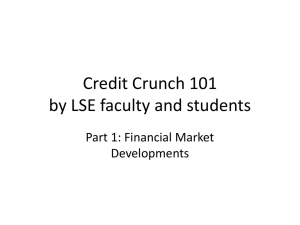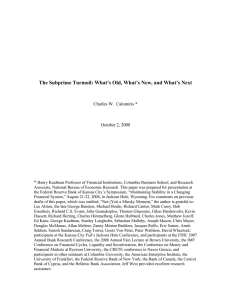Document 13569868
advertisement
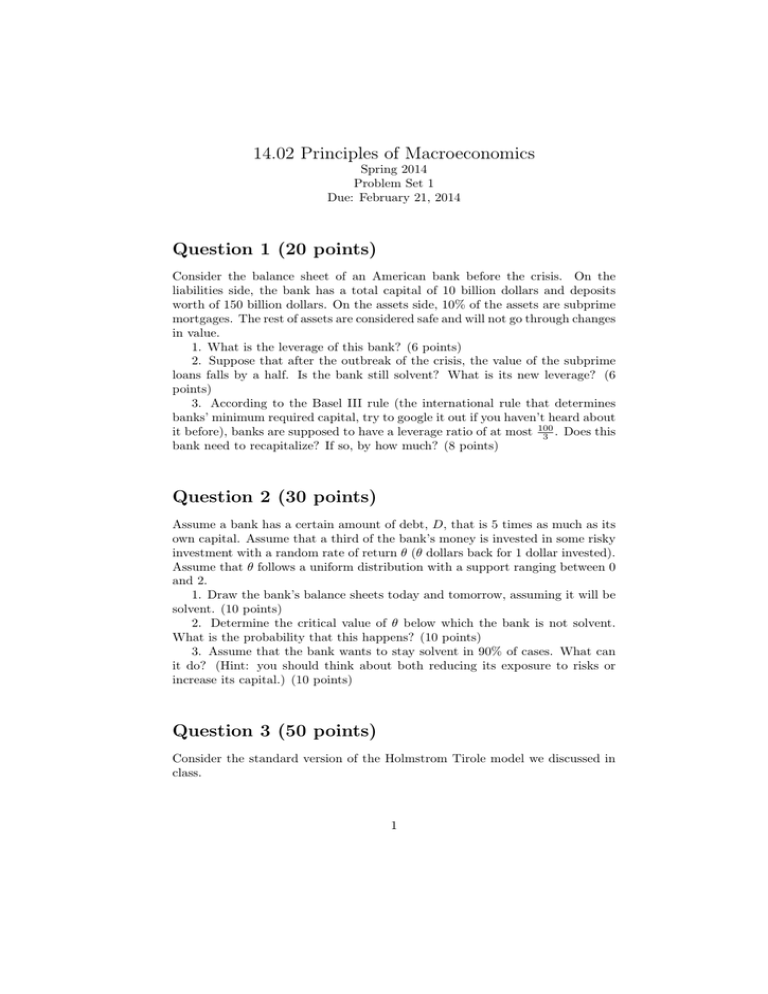
14.02 Principles of Macroeconomics Spring 2014 Problem Set 1 Due: February 21, 2014 Question 1 (20 points) Consider the balance sheet of an American bank before the crisis. On the liabilities side, the bank has a total capital of 10 billion dollars and deposits worth of 150 billion dollars. On the assets side, 10% of the assets are subprime mortgages. The rest of assets are considered safe and will not go through changes in value. 1. What is the leverage of this bank? (6 points) 2. Suppose that after the outbreak of the crisis, the value of the subprime loans falls by a half. Is the bank still solvent? What is its new leverage? (6 points) 3. According to the Basel III rule (the international rule that determines banks’ minimum required capital, try to google it out if you haven’t heard about it before), banks are supposed to have a leverage ratio of at most 100 3 . Does this bank need to recapitalize? If so, by how much? (8 points) Question 2 (30 points) Assume a bank has a certain amount of debt, D, that is 5 times as much as its own capital. Assume that a third of the bank’s money is invested in some risky investment with a random rate of return θ (θ dollars back for 1 dollar invested). Assume that θ follows a uniform distribution with a support ranging between 0 and 2. 1. Draw the bank’s balance sheets today and tomorrow, assuming it will be solvent. (10 points) 2. Determine the critical value of θ below which the bank is not solvent. What is the probability that this happens? (10 points) 3. Assume that the bank wants to stay solvent in 90% of cases. What can it do? (Hint: you should think about both reducing its exposure to risks or increase its capital.) (10 points) Question 3 (50 points) Consider the standard version of the Holmstrom Tirole model we discussed in class. 1 1. Consider first the case of direct investment (i.e. with no banks). Prove that there is a minimum amount of net worth, A, that entrepreneurs need to have to start the projects. (10 points) 2. Now suppose that no entrepreneurs in this economy have sufficient net worth so no projects are started in equilibrium. If you are a social planner, is there a way to redistribute initial wealth (only before the projects get started) in this economy to make a Pareto improvement (a Pareto improvement is a situation in which all agents in this economy are better-off)? What happens if instead of focusing on Pareto improvements, you only care about the GDP (or total investment)? (12 points) 3. Now let’s put banks back into the story. Recall that we denote by β the rate of return that a bank can obtain if it invests elsewhere. Show that there is a minimum amount of capital, IB , that banks have to contribute to the projects for there to be active monitoring. (10 points) 4. Assume that b + c < B. Compare a firm’s pledgeable income with or without banks. Show that in this case, it is possible for banks to possess zero capital yet they still take part in monitoring. What happens if b + c > B? (13 points) 5. What happens for entrepreneurs if A < A yet A + IB > I? (5 points) 2 MIT OpenCourseWare http://ocw.mit.edu 14.02 Principles of Macroeconomics Spring 2014 For information about citing these materials or our Terms of Use, visit: http://ocw.mit.edu/terms.
